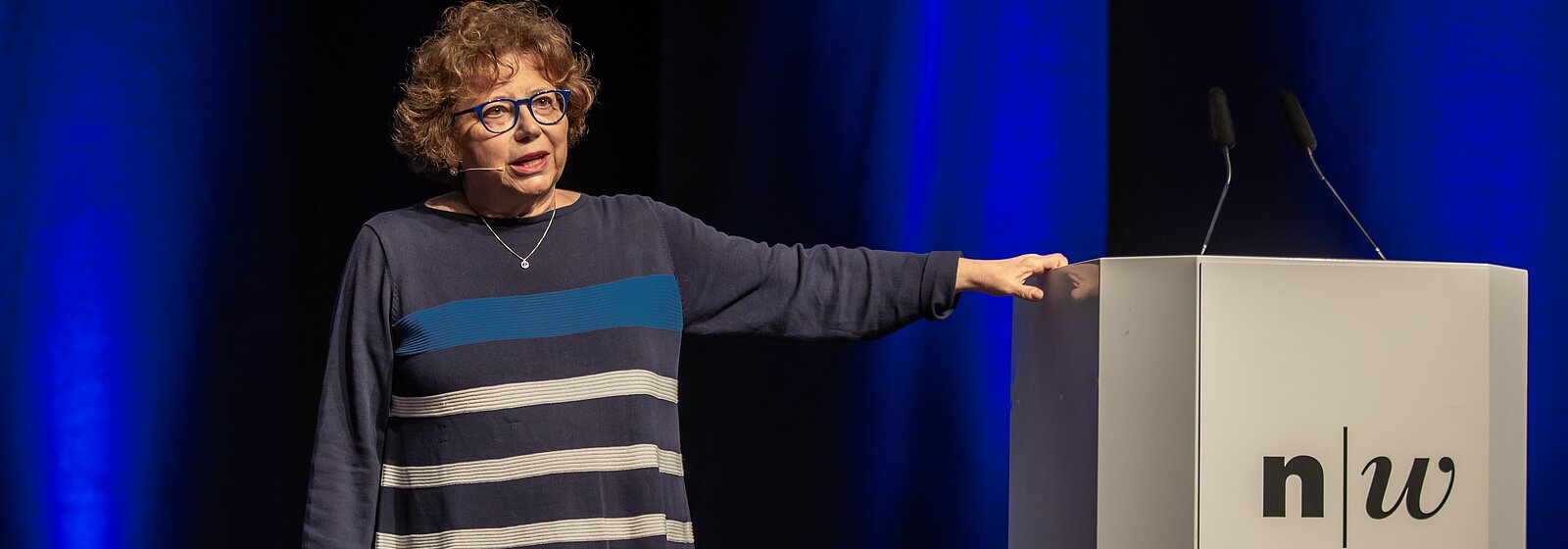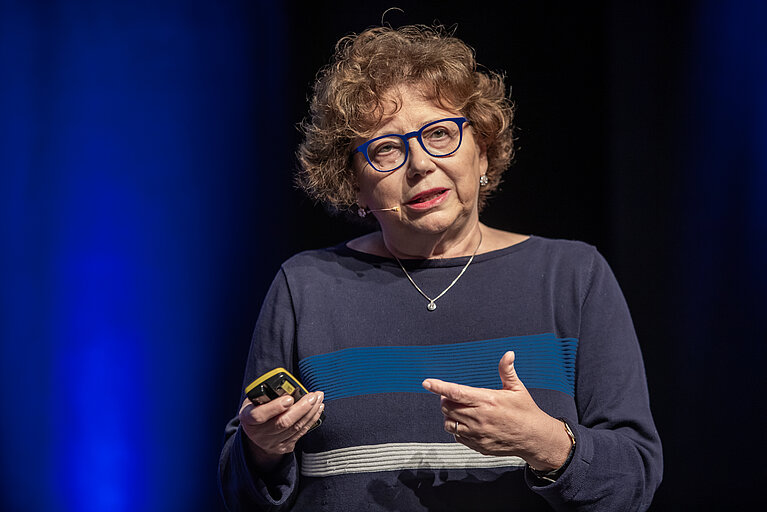August 1, 2025 – Interview by Santina Russo
Elisa Molinari, within the MaX European Centre of Excellence for Materials Design at the Exascale, you and your co-workers are streamlining and improving a set of material science simulation codes. How urgent is this work—considering that the codes already existed and worked?
It’s very significant, both from a research and a sustainability point of view. We improved a group of widely used open-source codes that predict and simulate the electronic properties of materials on the basis of quantum physics. Among them are, for instance, Quantum Espresso, Siesta, Yambo, Fleur, and bigDFT. We extensively restructured the codes to enable their efficient and automated use, aided by tools like AiiDA or the Materials Cloud. Most importantly, we developed the codes to support modern heterogeneous supercomputing architectures that combine GPUs and CPUs. This is one of the reasons why our work was and is urgent: without it, the codes would not be able to exploit essential advances of the current supercomputers. The result is a set of codes that can run on existing high-performance computing (HPC) architectures and are prepared to face future hardware evolutions. All of this is a lot of work and involved intense discussions within the community, but it is also very rewarding and successful. This way, we enable the codes to investigate new classes of materials and properties. And their use and scientific impact continue to grow: in 2024 alone, over 4000 scientific publications cited the respective papers.
What about sustainability—in which way did the codes become more sustainable?
Extensive and efficient use of GPUs itself results in reduced energy load. Thanks to a broad team effort coordinated by Lubomir Riha from our partner centre IT4I, we are also working specifically on energy efficiency. Using only static tuning of hardware power knobs, we already obtained energy savings of up to 10 percent using NVIDIA chips and up to 26 percent with AMD chips—these are substantial improvements, and more will come.
Sustainability was also the main theme at the recent PASC25 Conference, where you were invited to give a keynote speech. How recent and relevant is this awareness for the environmental impact of supercomputing?
Very relevant indeed. That goes for every research field using supercomputing resources, and materials science is a big user: In the last decade materials related research occupied an estimated 30 percent of HPC resources worldwide. This means we have a big responsibility to work efficiently and sustainably. And this starts with knowing how power hungry our codes are. In our work at the MaX Centre, measuring and improving the software towards better energy efficiency is a key commitment. These metrics are needed to raise awareness for energy-aware coding.
How far is materials science on this path towards more sustainability?
From the point of view of codes, there is still much potential to do better, for instance, through new algorithmic choices, and by preparing codes to take advantage of future hardware evolutions. Incorporating technological advancements and better efficiency in high-quality codes is a dynamic process. At the same time, many key contributions to sustainability come from the results of materials science and would not be possible without computational research and those codes: from the exploration of new materials for photovoltaics and thermoelectrics, to the understanding of battery degradation phenomena and possible solutions, to the analysis and control of friction that accounts for much of energy dissipation in many technological applications. And more will come by combining predictive first-principles codes with machine learning (ML) approaches. The goal is to employ ML to extract information from large amounts of materials’ data and find ways to describe the dynamics of materials in a simplified manner that allows to deal with processes involving multiple scales.
Sounds good. What are the obstacles to get there?
First, you need accurate and comprehensive datasets to train such ML models, and here lies the difficulty. Although there are materials databases based on data from experiments, it is also clear that these are often insufficient and need to be supplemented with data from calculations. Many databases mainly contain structural data on comparatively small and simple material structures, and little information on their properties. Today, ab-initio calculations using supercomputers can yield information on more complex systems and on their properties, for instance, information on the effect of local defects. But to describe these parameters accurately, you need to use quantum mechanics calculations and improve on some of the currently used approximations. This is computationally costly.
This again means using substantial supercomputing resources.
Yes. Indeed, we need to advance in three directions at the same time: first, improving the accuracy of the calculations to ensure predictivity of properties and functions; second, describing systems of increasing complexity and diversity to treat phenomena of technological relevance, where interfaces, defects, and disorder often play a key role; third, perform many of these calculations with high throughput. These combined challenges were sometimes seen as an “impossible triangle”. Thanks to the fast evolution of HPC and to the continued work of scientific communities, we are advancing in all these directions. This way we are improving our understanding and, at the same time, contributing data for training ML models. In turn, ML will help overcome space and time scale limitations and make computations more efficient—if they can be trained with proper materials data. But to produce such data we still need accurate ab-initio material codes. So, in a way, ML approaches and ab-initio modelling are complementing and pushing each other.
On the other hand, the rise of ML approaches means that more people are using supercomputers, which increases their size and environmental impact.
True, there is this effect for all computational domains. But also, there is the huge positive effect materials science and other fields bring, be it with or without the support of ML. At the MaX Centre, we focus on the general purpose of our codes, but we are proud to see how these enable a wide variety of projects in industry and academia that support green and sustainable development.
About PASC Conference
The Platform for Advanced Scientific Computing (PASC) Conference is an interdisciplinary conference in HPC that brings together domain science, applied mathematics, and computer science – where computer science is focused on enabling the realization of scientific computation. The PASC Conference provides three days of stimulating and thought-provoking sessions, including keynote presentations, minisymposia, peer-reviewed papers, panels, and poster sessions. The conference is co-sponsored by ACM SIGHPC, and full papers are published in the ACM Digital Library.


